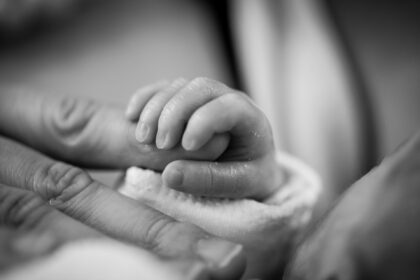In an ever-changing world, man depends on the permanents and invariables, clenching onto the solid and stable for a surety to hopes and dreams, for truth and understanding. When one facet of security falters, the mind scrambles for another source of refuge and strength. But what if another one falters? What if yet a third foundation crumbles?
Doctors and nurses spend thousands of dollars on education, learning the delicate intricacies of the medical field. Families go when their loved ones are hurting, sometimes on the brink of death. But what if the doctors can no longer be trusted? They encourage questions, but scrutinize the one who dares to ask or make a decision contrary to their advice.
For spiritual abuse victims, this lack of concern for the opinions of the patient, and often anger toward the patient’s defiance, triggers the fight or flight mentality, the patient still wounded from the indoctrination of authority. Still shamed into silence.
What happens when doctors cannot be trusted in one of the most vulnerable times of life?
A therapist finally found the common trigger in my life of an authority figure holding to a standard without care for those it affects underneath. Too often we trust or are guilted into trusting a doctor simply because he has a medical degree. Truly questioning them is frowned upon and shamed despite the encouragement to ask questions and be in charge of one’s own health care plan. The therapist believes these factors in my son’s traumatic birth triggered the trauma of the past spiritual abuse in my life.
***This first-hand account contains graphic details about afterbirth, including, but not limited to postpartum bleeding, bodily fluids, and breastfeeding, as well as medical examinations performed during pregnancy and postpartum***
Pulling up on dry, starchy sheets, the cold-bitter air still races across the long, hard bed.
Is he okay? I couldn’t take it. I tried. I tried so hard. Please. Just breathe. Oh God, let him be okay.
Nurses bustle around, changing sheets, checking the baby’s color, height and weight. The baby shrieks a newborn shrill, unhappy about the frigid, unfamiliar world.
He’s breathing. He’s here. He’s alive. Look at that little nose. Those little toes and little feet. He made it. He’s here. It’s over.
The nurse asks to take a picture for the new parents, hair-astray, exhausted and leaking.
My husband fell asleep. I told him he could. We almost lost the baby. I needed oxygen. They kept losing his heartbeat and he had no clue. But we didn’t lose him. He’s okay. He is okay. There’s so much blood. Am I allowed to get up to use the restroom now? Will that be restricted? Oh wait. The nurse said to let her know. I don’t want to be a bother.
The nurse comes over, gathers up the sheets from the bed, making sure not to miss the long ice pack saturated with blood. She holds the bedding at the front and back like a hammock to keep blood from spilling out all over the tired new mom as she hobbles across the floor to the bathroom in the room.
It feels so numb. It hurt so much. I tried. I planned so long. But what is this? Was this a good idea? Yes. “Children are an heritage of the Lord… (Psalm 127:3)”
Opening the bathroom door and guiding the mother in, the nurse gingerly helps the new mom get situated in the bathroom. She instructs about a slender bottle of water to spray with when urinating the first time after birth. The round sitz-bath goes under the toilet seat, filled with warm water for the mom to soak in for ten minutes, four to five times a day. The mom manages to sit down, overwhelmed and dazed at the magnitude of a new chapter of life, still weak from twenty-seven hours of labor.
I’m supposed to get water, and sit in it? There’s blood all over the seat. All over the floor. All over the gown. I wasn’t supposed to wear a hospital gown. The water is warm. Why is there so much blood? I didn’t know there would be so much blood. This isn’t how it was supposed to be. I planned for months. I wasn’t ready for this.
I was just at the OBGYN group a few days ago, eagerly hoping the doctor that day would say we were in labor. He had me lay back for a cervical check. It wasn’t new. They’ve been doing it since 36 weeks. I could feel the pressure of his hand and fingers, the usual twinges of strong discomfort and sometimes pain. But this time was different. I tried to resist scooting back as sharp, debilitating pain shot against my cervix and downward as he continued checking dilation and the baby’s position. The tears streamed down my face as I cried out in shock and agony.
He finally pulled his hand out, said I was still only at two centimeters, but we could walk for an hour and see if labor progressed. I asked if it was normal for it to hurt so much at this stage. He proceeded to tell me my cervix was tilted, and he had tried to shift it over manually. I never gave permission for that. He never told me it was tilted, and he never asked if he could move it with his hands. But I’m just a first-time mom. Was that normal at this stage? He went on to say labor was like an elephant in the room that can’t be ignored.
Back in bed, the nurses hustle out the door with the new father to prepare the next room, helping him haul heavy duffel bags, months worth of preparation for the big day. Alone in the peaceful quiet of the room, she holds her newborn. This helpless little baby depends solely on the mother for comfort and nourishment. She fumbles awkwardly to get baby latched for breastfeeding. He only latches for a moment and falls asleep.
I’m so sorry little one. I tried. Oh God, let him be okay. Please do not let my decisions from today affect him. Today was set as his induction day and God answered my prayer. I’m sorry I couldn’t handle the rest of it.
Was it only two weeks ago? I rushed in for an appointment, terrified amniotic fluid soaked my clothes. A female doctor tested the fluid and put me on a monitor for contractions. She asked about setting an induction date but left it alone after I declined. After some time, a strange, older doctor came in and said that the previous doctor was called out for a birth. The quirky man looked like a modern-day Albert Einstein with half-crazed eyes and thinning hair that stood on end.
Relentlessly, he pushed for an induction date, calling himself a self-proclaimed interventionist. I had spent the last five months learning how to avoid interventions for my baby’s sake. Inductions meant Pitocin, confined to a bed, slowing down the progression of labor, increasing the risk of a c-section. Pitocin leads to an epidural, both of which can affect the baby’s heart rate, alertness after birth, jaundice, and the list went on. I politely but firmly declined an induction date, but he continued to push without apology or remorse.
His medical opinion was baby was safest in the womb until thirty-seven weeks, and safest out of the womb AFTER thirty-seven weeks. Law prohibited an induction before thirty-nine weeks without an emergency, so he stressed inducing as soon as possible at thirty-nine weeks. “Every year, a mom comes in one week and everything is fine, and then comes back the next week and there’s no heartbeat.”
Disappointed, shaking, and terrified, I left the appointment with an induction date set for February 26th, praying I’d go into labor before then. I went into labor the day before my scheduled induction and he was born twenty-seven hours later.
A few nurses came back in with the new father, everything ready to move from the birthing room to postpartum care for the duration of the stay. After a gentle nurse helps the mother into a wheel-chair, the nervous dad gives the little squirming boy back to his mother. They wheel slowly out the doors into the brightly-lit hallway.
This hallway. This circle. We walked around and around, stopping with every contraction to sway on my husband’s neck, determined to have a medication-free vaginal birth against the hospital norm.
There was the nurse’s station. They never looked at my birth plan. They didn’t care. I was a first-time mom and I didn’t know what I was talking about despite months of planning. They had seen it time and time again. What I wanted for my body and my baby didn’t matter.
When we first checked in, I asked for the stint-lock as my OB and I agreed on. I didn’t want to be hooked up to Pitocin without permission. The nurse said it was policy for necessary fluids and Pitocin. I denied the IV line, nervous but firm. She left to speak with the doctor who then approved the stint-lock.
Why couldn’t the battle have ended there? I wanted freedom to move around in labor, to allow gravity to aide naturally in the baby dropping and cervix dilating, but she told me I had to be strapped to the monitor, on the bed, for forty-five minutes out of every hour. Staying on the bed prevents labor progression, leading to Pitocin, an epidural, and a cesarean. We are going to the mission field. I cannot be in the position of needing to come back to the states for a c-section every time we have a baby!
With permission from the doctor again, she said I could stand by the bed for forty-five minutes. After all of this, I didn’t have the strength left to argue about wearing more comfortable clothes than a hospital gown, “the first intervention.”
Down the hall and through the double doors, the new parents enter a postpartum care room. Brightly lit, still pungent with the smell of housekeeping, the couple settles in. Back on the bed, a nurse knocks on the door to introduce the new shift nurse: names, status, medications, times. The nurses leave, only to have another knock at the door a few minutes later. The new nurse walks in to check on mom’s vitals: blood pressure, heart-rate, temperature. With permission, she presses hard on her stomach, intensely massaging her enlarged uterus to assist in its reduction back to normal size. The mom cries in pain, but the massaging is necessary. She checks the vaginal opening and swollen areas surrounding, checking the healing of the first-degree tear. Tucks pads are available for the pain. She asks the mom to roll over where she checks in the adult-size disposable underwear, inspecting hemorrhoids from birth.
This can’t be happening. I want to not be touched. I just want sleep. They inspect every part of my body as if cervical checks and birth were not enough. After five hours at six centimeters, I finally let them break my water and it was like a part of me died. Labor became more intense as expected, intensifying labor and adding a greater strain than my body intended. The only comfortable position was on my feet, but my feet throbbed and ached from swelling and standing for hours on end. Contractions were stronger and lasted longer but I couldn’t leave the bed because of the monitor.
Beginning at my tailbone, the pain would gradually increase like a knife in my back, followed by my stomach tightening from a contraction at seven centimeters, providing slight relief before the knife twisted deeper into my back until my knees began to buckle underneath of me. I needed to stay calm and relaxed to keep the pain tolerable through each birthing wave, but I tensed at the thought of each contraction.
Why couldn’t I handle it? Why wasn’t I more prepared? I was trapped. I was trapped at seven centimeters, contractions every few minutes for four grueling hours, knowing it was now too late for an epidural.
Shortly after the nurse leaves, the baby cries for milk again. Though the nerves in her arms are pinching from pregnancy swelling and carpal tunnel, the baby depends on her for survival. Just as the baby begins to fall asleep, there is a sudden knock at the door. A different nurse comes in from downstairs to check the baby’s vitals:
How many wet diapers? How many dirty diapers? How many feeds? How long is each feed on each side? How long is baby awake? The mom shakes her head in a daze, unsure of the answer.
Has he even needed a diaper change? I think a nurse changed it. I was supposed to keep the dirty diapers for weighing? I’m supposed to remember how long the baby nurses and how long the baby sleeps? All I want is sleep.
The baby is losing too much weight and a nursing consultant will be called in for assistance. The hospital provides a pump and a strange tube to feed the baby over the shoulder in hopes of him getting more milk into his tiny belly. As the nurse leaves, the mom asks permission to take a shower for the first time in two days. While in the shower, the flashbacks flood in as tears stream down her face, struggling to complete the simple task of bathing and washing away the never-ending flow of blood.
I allowed the doctor to lie to me about the side-effects of an epidural after finding out it was still available. I knew the one doctor I wanted to birth the baby was either ignorant or lied to my face, stating that she wouldn’t give medication that wasn’t safe. But I needed a way out. I screamed in pain from a contraction as they put in the epidural. I laid down, finally able to breathe but still shaking from the residual pain. I told my husband he could sleep after twenty-one hours of labor, not knowing the next several hours would consist of them losing my baby’s heartbeat again and again because of the monitor. Before I knew it, they were placing an oxygen mask on my face in order to keep his heart rate up, another side of effect of the epidural and the Pitocin required with the epidural. What if my baby didn’t make it because I couldn’t handle it? How has he been affected since then?
Coming out of the shower, the mom sighs as a nurse inquires about her use of the sitz-bath.
With what time? With what energy? They come in every thirty minutes for vitals and shift changes. All I want is to sleep. All I want is my bed. All I want is for things to make sense again and for the tears to stop.
Picking up the strange, round pink contraption, and fumbling to fill it with water, a suffocating level of shame drowns the first-time mom as she stays in the bathroom, her baby in the nursery away from its mother, not knowing how to handle the strain of demands with a newborn.
“The only reason you want to get married is to have sex and to have babies” replays again and again in my head. It shouldn’t be this bad. If only I hadn’t given up.
That bed. The doctor walked in. Time to push. There I was, on my back, the worst possible position for pushing: pushing while they counted. It wasn’t supposed to be this way. I had read about “purple-pushing.” It decreases the oxygen to the mother and baby. It creates an added strain and adds to the likelihood of tearing, especially in a first-time mother. When he was finally born, it felt surreal.
The nurses begin to notice that something is off and asks continually if the mother is alright. She walks on her own down the hallway without her baby, exhausted and barely sleeping. She often cries, and feels lost with a history of depression, but she denies everything in fear of her baby being taken away.
This was the baby I had carried for nine months and already I could have lost him? I allowed them to break my water. Then the epidural, the Pitocin, his heart rate and the oxygen. I felt so alone not knowing if he would breathe when he was born. Now my back hurts from the epidural to the point that I can barely bend over and pick him up. Now the blood and the tears and the pain. Now he’s not gaining weight because of the jaundice- a side effect of Pitocin- and there’s nothing I can do about it. If only I was more prepared. If only I hadn’t let the doctor lie to me. If only I was strong enough.
Another knock at the door. The OBGYN comes in to check on the mother and the baby. It is the same quirky doctor who was a self-proclaimed interventionist.
********
Shop at our Amazon store! As an Amazon Influencer, this website earns from qualifying purchases.
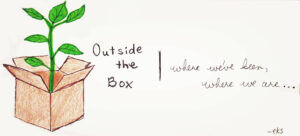


 As the humid summer days grow longer, tall sunflower stalks follow the path of the dawning sun until shadows appear under the moonlit sky. Then, eager for a new day with endless possibilities, the yellow giants twirl around in anticipation of the sun’s kisses in the morning. While many cling to the flower’s intense focus on the hope of a new dawn, I cringe at their faces,
As the humid summer days grow longer, tall sunflower stalks follow the path of the dawning sun until shadows appear under the moonlit sky. Then, eager for a new day with endless possibilities, the yellow giants twirl around in anticipation of the sun’s kisses in the morning. While many cling to the flower’s intense focus on the hope of a new dawn, I cringe at their faces, 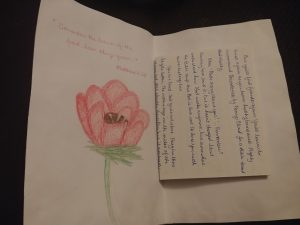
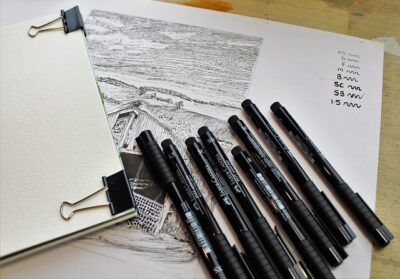
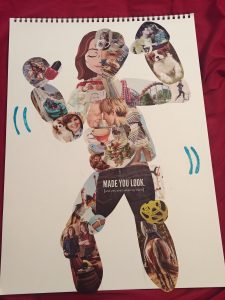 Plunging deep into the plush couch cushions, nothing beats the cozy holiday flavor of warm
Plunging deep into the plush couch cushions, nothing beats the cozy holiday flavor of warm 